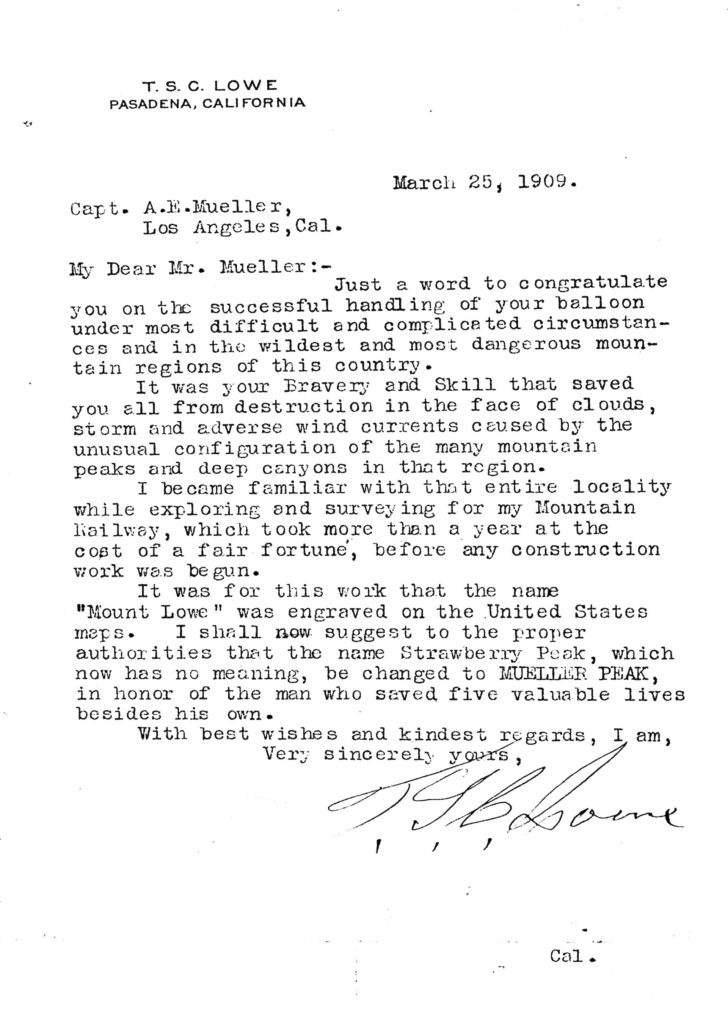
By the time Professor Thaddeus Sobieski Constantine Lowe arrived in Pasadena in 1890, he had already achieved great success producing light-weight gasses for commercial use. In addition, he was recognized for flying reconnaissance balloons for President Lincoln during the Civil War. With substantial wealth and a respectable reputation in the sciences, Lowe was on the brink of making history that would make his name a household word but cost him his fortune.
Lowe was born Aug. 20, 1832 in Jefferson Mills, a small village in northern New Hampshire, to a family of modest means. His father was the town cobbler and local grocery clerk. Although Thad worked to help his financially strapped family, he did well in school, showing a particular interest in botany, chemistry and geology. At 15, he left for Boston to assume a cobbler apprenticeship, but still continued studying on his own. By the time he was 18, Lowe was touring the country with an alchemist, demonstrating how gasses could raise large balloons into the air. It was probably at this time that he first received the honorary title of “Professor,” it being commonly awarded to – or adopted by – patent medicine carnival barkers, lecturers, men of science and leaders of small orchestras. Read more about young Thaddeus here.
Lowe the Balloonist
With help from Leontine, and using plans from a book written by one of his contemporaries, Lowe built his first airship in 1857 at age 25. He funded the construction of his next and larger balloon by charging for tethered balloon rides to eager spectators attending his exhibitions. By this time he had become renowned in the art and science of hot air ballooning. He opened a factory to build balloons for customers across the United States, using some of his profits to construct the largest balloon ever attempted, which he intended to fly across the Atlantic Ocean. Miscalculations, bad weather and civil war, however, delayed his dream of transatlantic flight. Instead, he attempted a transcontinental flight from Cincinnati to New Jersey, but an air current landed him in South Carolina, where he narrowly escaped hanging as a “Union spy.” Read more about Lowe’s balloons and his war work here.
Lowe’s Home and Businesses
Lowe not only flew balloons, he also made machines to create the gasses that inflated them. With 18 patents, from ice-making machines to iron and steel refinement techniques, to the production of heating-gas and its distribution, Lowe was a wealthy man, ready to retire, by the time he arrived in Pasadena in 1890.
The Lowes built a 24,000 square foot mansion on Orange Grove Boulevard, complete with an observatory and four story tower that provided views from the San Gabriel Mountains to the Channel Islands. Within a few years he’d established three ice companies, a gas company and the Citizen’s Bank of Los Angeles. He also purchased and renovated the Pasadena Opera House, where his business headquarters were located. Read more about Lowe’s business dealing here.




















